Evaluating the periphyton as a bioreactor for removal of nutrients in a shallow hypereutrophic reservoir
Avaliando o perifíton como biorreator para remoção de nutrientes em um reservatório raso hipereutrófico
Suele Aparecida Mendes-Santos; Carla Ferragut
Abstract
Keywords
Resumo
Resumo: :
Palavras-chave
References
ANDERSEN, J.M. An ignition method for determination of total phosphorus in lake sediments.
AMERICAN PUBLIC HEALTH ASSOCIATION – APHA. American Water Works Association. Water Environment Federation.
AMARAL, L.M., CASTILHO, M.C.A., HENRY, R. and FERRAGUT, C. Epipelon, phytoplankton and zooplankton responses to the experimental oligotrophication in a eutrophic shallow reservoir.
BICUDO, C.E.M., CARMO, C.F., BICUDO, D.C., HENRY, R., PIÃO, A.C.S., SANTOS, C.M. and LOPES, M.R.M. Morfologia e morfometria de três reservatórios no PEFI. In D.C. BICUDO, M.C. FORTI and C.E.M. BICUDO, eds. Parque Estadual das Fontes do Ipiranga (PEFI): unidade de conservação que resiste à urbanização de São Paulo. São Paulo: Secretaria do Meio Ambiente do Estado de São Paulo, 2002, pp. 143-160.
BICUDO, D.C., ZANON, J.E., FERRAGUT, C., CROSSETTI, L.O., FAUSTINO, S. and BICUDO, C.E.M. Garças Reservoir trophic state dynamics: a 20-year synthesis.
BICUDO, D.C., FONSECA, B.M., BINI, L.M., CROSSETTI, L.O., BICUDO, C.E.M. and ARAÚJO-JESUS, T. Undesirable side-effects of water hyacinth control in a shallow tropical reservoir.
INSTITUTO DE ASTRONOMIA, GEOFÍSICA E CIÊNCIAS ATMOSFÉRICAS – IAG/USP. Boletim climatológico anual da estação meteorológica [online]. São Paulo: IAG/USP, 2016. [viewed 01 Feb. 2019] Available from:
BORDUQUI, M., FERRAGUT, C. and BICUDO, C.E.M. Factors determining periphytic algae succession in a tropical hypereutrophic reservoir.
CAO, J., HONG, X. and PEI, G. Removal and retention of phosphorus by periphyton from wastewater with high organic load.
CHEN, N., LIU, L., QIAO, D., LI, Y. and LV, Y. Seasonal succession patterns of plankton in eutrophic rivers on plains.
CROSSETTI, L.O., BICUDO, D.C., BINI, L.M., DALA-CORTE, R.B., FERRAGUT, C. and BICUDO, C.E.M. Phytoplankton species interactions and invasion by
DELLAROSSA, V., CÉSPEDES, J. and ZAROR, C.
DODDS, W.K. The role of periphyton in phosphorus retention in shallow freshwater aquatic systems.
GAISER, E.E., SCINTO, L.J., RICHARDS, J.H., JAYACHANDRAN, K., CHILDERS, D.L., TREXLER, J.C. and JONES, R.D. Phosphorus in periphyton mats provides the best metric for detecting low-level P enrichment in an oligotrophic wetland.
GAO, F., YANG, Z.H., LI, C., ZENG, G.M., MA, D.H. and ZHOU, L. A novel algal biofilm membrane photobioreactor for attached microalgae growth and nutrients removal from secondary effluent.
GU, B. and DRESCHEL, T. Effects of plant community and phosphorus loading rate on constructed wetland performance in Florida, USA.
HAMMER, Ø., HARPER, D.A.T. and RYAN, P.D. PAST: Paleontological Statistics software package for education and data analysis.
HANSSON, T.H., GROSSART, H.P., DEL GIORGIO, P.A., ST‐GELAIS, N.F. and BEISNER, B.E. Environmental drivers of mixotrophs in boreal lakes.
LAUTENSCHLAGER, S.R.
LE MOAL, M., GASCUEL-ODOUX, C., MÉNESGUEN, A., SOUCHON, Y., ÉTRILLARD, C., LEVAIN, A., MOATAR, F., PANNARD, A., SOUCHU, P., LEFEBVRE, A. and PINAY, G. Eutrophication: a new wine in an old bottle?
LU, H., YANG, L., SHABBIR, S. and WU, Y. The adsorption process during inorganic phosphorus removal by cultured periphyton.
MCCUNE, B. and MEFFORD, M.J.
MISHRA, S. and MAITI, A. The efficiency of
MORASHASHI, A.C., JESUS, T.A., ROSA, D.S., HARADA, J. and BICUDO, D.C. Avaliação e comparação do acúmulo de fósforo por biofilme formado sobre lâminas de vidro e de filme polimérico biodegradável (Ecovio® modificado).
PATEL, S. Threats, management and envisaged utilizations of aquatic weed
PERES-NETO, P.R., JACKSON, D.A. and SOMERS, K.M. How many principal components? Stopping rules for determining the number of non-trivial axes revisited.
POMPÊO, M.L.M. and MOSCHINI-CARLOS, V.
ROTHHAUPT, K.O. Utilization of substitutable carbon and phosphorus sources by the mixotrophic chrysophyte
SANTOS, S.A.M., SANTOS, T.R., FURTADO, M.S., HENRY, R. and FERRAGUT, C. Periphyton nutrient content, biomass and algal community on artificial substrate: response to experimental nutrient enrichment and the effect of its interruption in a tropical reservoir.
SARTORY, D.P. and GROBBELAAR, J.U. Extraction of chlorophyll a from freshwater phytoplankton for spectrophotometric analysis.
SCHINDLER, D.W. The dilemma of controlling cultural eutrophication of lakes.
STRICKLAND, J.D.H. and PARSONS, T.R. A manual of seawater analysis.
SUTHERLAND, D.L. and CRAGGS, R.J. Utilizing periphytic algae as nutrient removal systems for the treatment of diffuse nutrient pollution in waterways.
TRAVAINI-LIMA, F. and SIPAÚBA-TAVARES, L.H. Efficiency of a constructed wetland for wastewaters treatment.
UMBREIT, W.W., BURRIS, R.H. and STAUFFER, J.F.
ZHANG, Y., LIU, H., YAN, S., WEN, X., QIN, H., WANG, Z. and ZHANG, Z. Phosphorus removal from the hyper-eutrophic Lake Caohai (China) with large-scale water hyacinth cultivation.
WETZEL, R.G.
WU, Y. ZHANG. S., ZHAO H. and YANG, L. Environmentally benign periphyton bioreactors for controlling cyanobacterial growth.
WU, Y., LIU, J. and RENE, E.R. Periphytic biofilms: a promising nutrient utilization regulator in wetlands.
VYMAZAL, J. Removal of nutrients in various types of constructed wetlands.
Submitted date:
09/10/2020
Accepted date:
04/28/2021
Publication date:
05/25/2021

